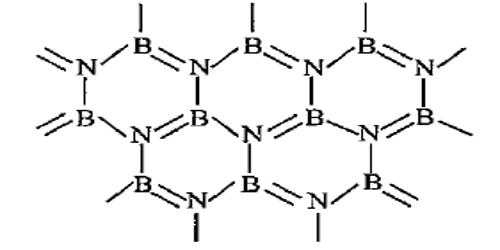Boron nitride (BN) epitomizes the elegance of material science, existing in a classical regime of simplicity contrasted with the profound complexity of its properties. Often likened to a crystalline soulmate of carbon, boron nitride is regarded as “white graphite” due to its analogous layered structure. However, its structural and physical attributes diverge intriguingly from those of its carbon counterpart, creating a distinct substance that captivates the imagination.
The core attributes of boron nitride can be categorized into several pivotal domains: structural forms, thermal conductivity, electrical insulating characteristics, chemical stability, and mechanical properties. Each property contributes to a composite picture that reveals its multifaceted applications across various scientific and industrial arenas.
1. Structural Forms: The Distinct Varieties of BN
Boron nitride is not monolithic; rather, it exists in several allotropes, which include hexagonal boron nitride (h-BN), cubic boron nitride (c-BN), and amorphous boron nitride. The hexagonal form, reminiscent of graphite, boasts a layered structure where atoms are bonded in a planar arrangement, facilitating excellent lubricating properties. Conversely, the cubic variant mirrors diamond’s three-dimensional lattice, granting it unparalleled hardness, thus making it a formidable competitor to industrial diamonds.
Amorphous boron nitride recognizes no defined crystalline structure, presenting a flexible material for those applications necessitating moldability. This structural versatility enables boron nitride to adapt to a plethora of uses, impacting fields ranging from electronics to advanced ceramics.
2. The Dance of Thermal Conductivity
Possessing commendable thermal conductivity, particularly in its hexagonal form, boron nitride can be compared to a conductor that orchestrates an intricate symphony of heat distribution. Such thermal prowess positions boron nitride as a prime candidate for applications where efficient thermal management is paramount. Thermal conductivity in hexagonal boron nitride can approach that of graphite, ensuring that devices maintain operational integrity even under thermal duress.
Moreover, the thermal stability of boron nitride at elevated temperatures enhances its appeal in high-temperature applications, sustaining its properties well beyond the tipping point where many other materials fail. This characteristic is particularly desired in automotive and aerospace industries, where systems are routinely subjected to extreme conditions.
3. The Nonconductor’s Ethereal Insulation
In the realm of electrical properties, boron nitride shines as a formidable electrical insulator. The ability to inhibit electrical conductivity can be likened to a guardian at the gates, protecting sensitive components within electronic devices from potentially damaging currents. This desolate but effective barrier is spurred by its bandgap, which remains broader than many traditional insulators.
The impressive dielectric strength underscores its utility in electrical applications, specifically in these composite electrical insulators, which protect wiring and electronic devices from short circuits and electrical interference, effectively sheltering the heartbeat of technological devices.
4. Impeccable Chemical Stability
Beyond its physical allure, boron nitride exhibits remarkable resistance to various corrosive agents. It encompasses a steadfast nature echoed by its atomic bonds—boron and nitrogen forming a resilient network immune to oxidation. In applications involving harsh chemicals or extreme pH environments, boron nitride stands as a resolute sentinel, guarding materials and structures from degradation.
This property makes boron nitride exceptionally advantageous in aerospace, metallurgy, and chemical processing settings, where exposure to reactive substances can enfeeble many conventional materials. Furthermore, its inertness is paramount in biomedical applications, where it powers advancements in drug delivery systems and biocompatible devices without exacerbating the biological milieu.
5. Mechanical Properties: A Synthesis of Strength
The realm of mechanical attributes presents boron nitride as a titan among materials, exhibiting excellent hardness, high flexural strength, and tensile resilience. Cubic boron nitride, in particular, rivals diamond in terms of hardness, making it ideal for cutting tools and abrasive materials. Its unique toughness and ability to withstand deformation allow it to excel in applications requiring sharpness and durability.
Hexagonal boron nitride provides an intriguing counterbalance. While not as hard as its cubic counterpart, its layered structure results in a low friction coefficient, bestowing exceptional lubricating properties. This quality supports applications in coatings and surface treatments where friction reduction is a necessity to extend machine life and optimize performance.
In conclusion, boron nitride is a veritable tapestry woven from its structural diversity and interconnected properties. This material embodies the paradox of robust simplicity—each property, while straightforward, combines to craft a versatile entity that addresses contemporary technological challenges. As industries continue to seek materials that can bolster performance alongside resilience, boron nitride presents an alluring synthesis of existence, promising to further captivate the realms of science and engineering for years to come.












